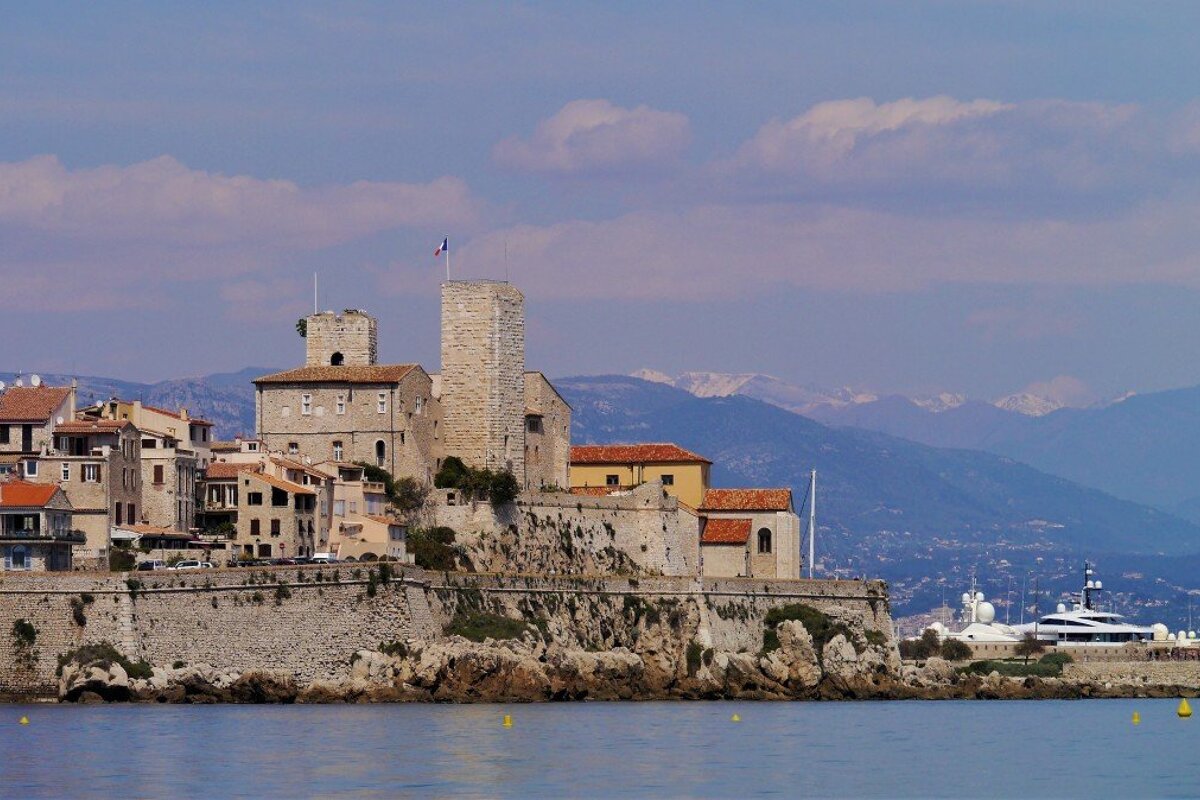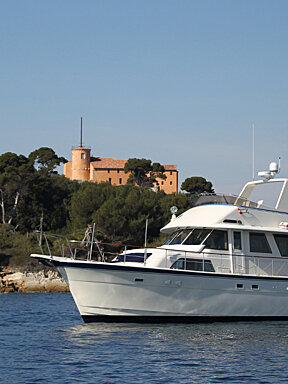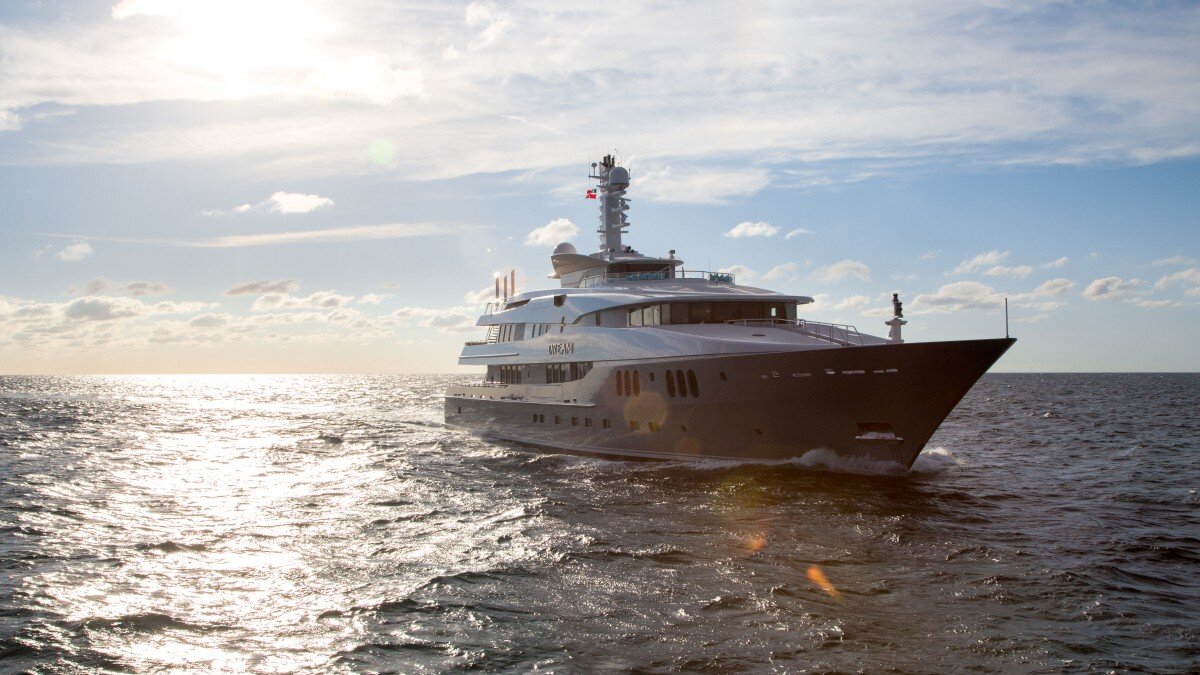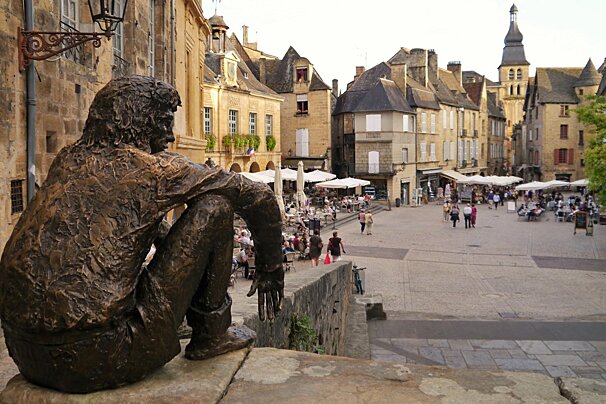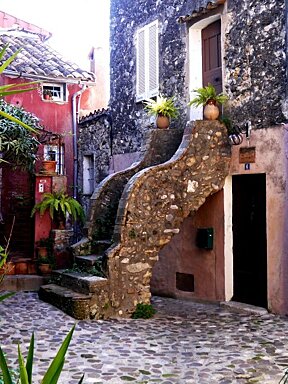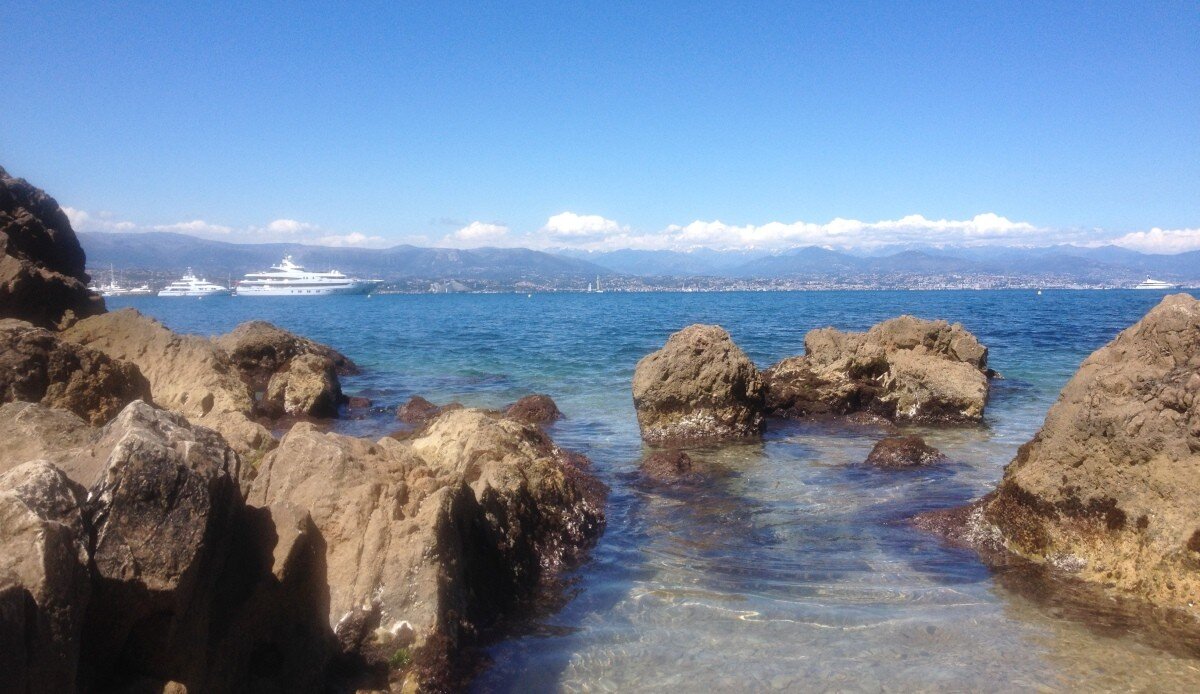
© PWilliamson
Must-see attractions in Antibes
Yachting capital, beach resort and historical treasures
Antibes has many faces. First ruled by the Ancient Greeks, its thick city walls were built high during medieval times to defend from invasion, pirates and plagues.
As tourism arrived on the Riviera in the 19th century, the town enjoyed a renaissance from a quiet fishing village and military post into a popular Mediterranean destination known for its dazzling superyacht port, beautiful old town, and soft sandy beaches.
To help you discover Antibes’ many personalities and evolutions, we’ve put together a list of sights and experiences to give you a real sense of this charming French port town. Here are the essential sights of Antibes.

Must-see for the art
Visit the Picasso Museum in the tower of the Chateau Grimaldi where Picasso once lived and worked. Picasso himself credits his six months in Antibes with bringing life and light back into his work, saying ‘Each time I come here (Antibes) I am attacked by the itch of antiquity.’
He was so grateful to the town and the owners of the Chateau Grimaldi that he donated all of the work he had done during his time there, saying ‘If you want to see the Picassos of Antibes, you must come to Antibes.’
His lithographs, paintings, drawings and ceramics remain on display today, alongside works by Nicolas de Staël, Hans Hartung and Anna-Eva Bergman.
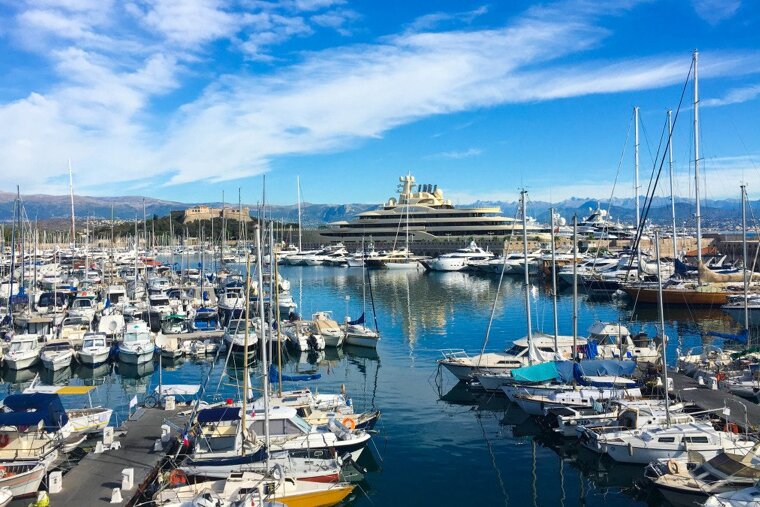
Must-see for the superyachts
Stroll along the International Quay of Port Vauban, one of the largest superyacht ports on the planet, and I dare you not to be astonished at the immense and lavish superyachts lined up along what’s known locally as ‘Millionaire’s Quay’. Mind you, with the smallest boat on this quay being worth well in excess of €50 million, it’s probably time to rename it as 'Billionaire’s Quay' to keep up with inflation!
Whilst near the port take a look at the splendid sculpture of the huge man, ‘La Nomade’ perched above the sea wall.

Must-see for the history
Take a walk around the ramparts to Le Bastion St Andre. Few visitors know that the mighty Antibes ramparts used to extend all the way around the town, before being knocked down in the early 1900s to allow for more space and light. There’s a splendid view of the old town as you walk around the ramparts before you come to the small museum of Le Bastion, which is built into the wall and features archaeological findings from sea and land dating back 3,000 years.
If you’re keen on history, also check out Fort Le Carré where Napoleon Bonaparte was briefly imprisoned for ten days in 1794 during the French Revolution.
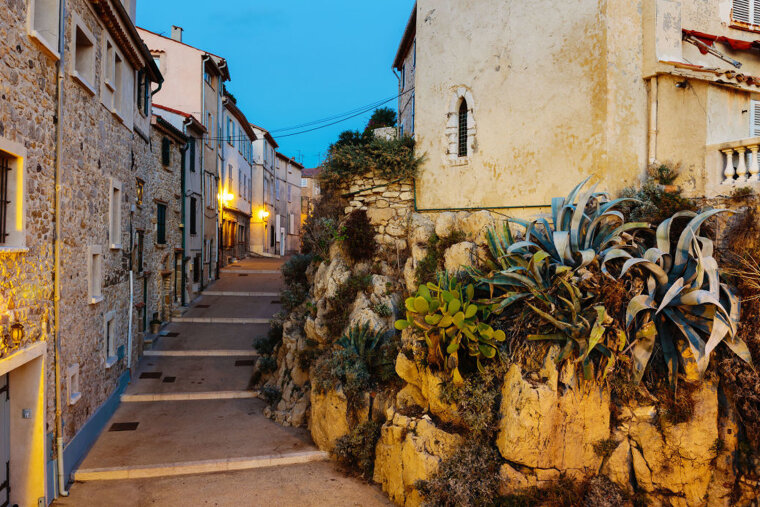
Must-see for local culture
Discover the Safranier commune.
Tucked away in that little hollow that runs down from the market is the tiny Safranier district of Antibes, where you’ll find gloriously pretty cobbled lanes, an ancient well and fountain, and a small square where local feasts are held.

Must-see for the food
Check out the Provençal market.
Antibes is littered with restaurants and cafés, but the beating culinary and cultural heart of this town is undeniably the Provençal market. Eat a steaming slice of delicious socca (a wood-fired chickpea crepe) as you wander through the heaving trellises of cheeses, piles of olives, cured meats and bunches of lavender, or sit down at one of the cafés at the edge and watch the world go by. Bliss!

Must-see for the view
Climb the ancient Roman path through the forest to the Phare de la Garoupe lighthouse and chapel. Up here, on the Cap d’Antibes, you can look down upon the Old Town of Antibes and its huge superyacht port, and across the Bay of Angels to Nice, the towering Alps rising up behind.
In the other direction, you can see across the coast past Juan les Pins to the Bay of Cannes. Those who fancy a longer walk should not miss the outstanding coastal path around the Cap d’Antibes.
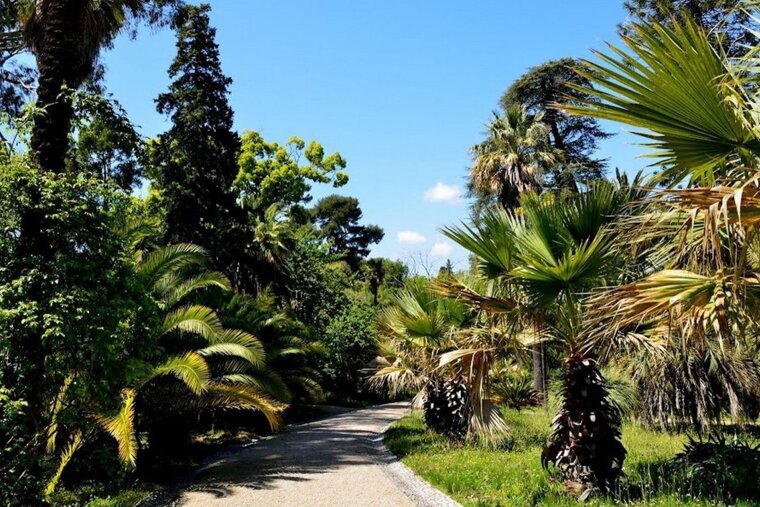
Must-see for the exotic gardens
Explore the Jardin Botanique de la Villa Thuret on the Cap d’Antibes. This magnificent five-acre garden is full of tropical and exotic plants, with a focus on the southern hemisphere. There was a craze in Europe for plants from the new world during the 19th century, so expect plenty of eucalyptus and tropical trees.
If you’re interested in splendid villas, explore nearby Villa Eilen Roc which is open to the public, or just wander through the wealthy streets of the Cap d’Antibes marvelling at the giant mansions and huge gates.

Must-see for the joie de vivre
Head down to Plage du Ponteil in the early summer evening and stroll along the beach promenade, or take a bench seat under the palms. The beach stays busy long into the evenings in summer, with people swimming, having picnics, and playing beach volleyball in the long pink twilight.
If you’re lucky, when the sun finally retires behind the Alps, the skies will come alive with one of the fantastic fireworks displays that light up the Riviera night on certain dates through summer.
More inspiration...
There is so much to discover in Antibes and so many hidden treasures. Start planning your trip now and check out our favourite beach clubs, luxury hotels, boutique hotels and charming B&Bs in Antibes.
